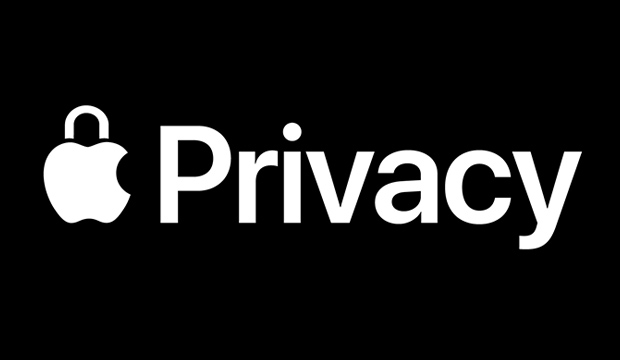Apple’s plan to release its App Tracking Transparency (ATT) privacy enhancement feature in early spring has set the ad industry on its ear and triggered a war with Facebook.
ATT requires apps to get a consumer’s authorization before tracking them or the devices they are using.
Ray Wang, principal analyst and founder at Constellation Research, told the E-Commerce Times that “at least 40 percent of consumers will say no.”
Advertisers “will have to be explicit on the value exchange required to receive consent for this data,” Wang said. “Some may pay for it; some may create an offer around it. But consent must be explicit, it can no longer be implicit or passive.”
Large advertisers will be able to work with App Tracking Transparency, but small and medium-sized businesses “will find it harder to succeed in digital marketing and targeting campaigns as they will not have the tools to improve relevance and personalization,” Wang observed.
Facebook and the Loss of Personalization
Facebook contends that publishers should expect ad revenue to decline once this feature is rolled out and noted that publisher revenue on its Audience Network fell by more than 50 percent when personalization was removed from mobile app ad install campaigns. Audience Network extends Facebook’s people-based advertising beyond its platform.
“If you’re trying to reach out to your audience with generic, impersonal content, you’re missing out on a huge opportunity to engage them and encourage them to stay with you in the long run,” according to PieSync, a provider of online productivity tools that sync contacts between CRM and marketing apps. “Talking to them directly, with laser focus on what they like and are naturally interested in, is your best bet to win them over.”
Facebook is hedging its bets. The company threatened to remove Audience Network from iOS 14, but in the same blog post, also pledged to release an updated version of the Audience Network SDK (software development kit) to support iOS 14.
Google’s Response
Google will not display Apple’s ATT prompt or use IDFA on its apps available on iOS and acknowledged publishers’ ad revenues might be impacted.
“Is this Google’s move to double down on GAID as the standard for advertising device and user ID and an attempt to nullify IDFA?” questioned Liz Miller, vice president and a principal analyst at Constellation Research.
“Either way, the big opportunity here is for data and analytics vendors that can bring these metrics into a single pane of glass without the hours-long practice of data standardization, export and import before performance metrics can be obtained,” Miller suggested.
To rescue anyone now drowning in acronym soup:
GAID is the Google advertising ID; a string of 32 numbers and lowercase letters that identifies an Android device such as a smartphone or a tablet.
IDFA, or Identifier for Advertisers, is a unique, random, and resettable device identifier assigned to a user’s iOS device.
Ad Industry, Large Retailers Respond
The global advertising industry formed the Partnership for Responsible Addressable Media (PRAM) last August in response to Apple’s ATT plans.
PRAM “is a joint-industry initiative to advance and protect critical functionalities like measurement and attribution for digital media and advertising, while safeguarding privacy and improving the consumer experience,” according to the American Association of Advertising Agencies’ website.
“With Google’s announcement in January that they would be ending support of third-party cookies in Chrome in two years and Apple’s recent announcement changing IDFA tracking to opt-in in iOS 14, it’s become increasingly clear that privacy and data usage is increasingly moving towards a proprietary, non-interoperable framework.
“The ramifications of this could be substantial to the digital advertising ecosystem resulting in not only the walled gardens getting higher but also a fragmented landscape of privacy frameworks requiring advertisers to keep track of the intricacies of compliance requirements across browsers, operating systems, platforms, etc.,” the 4A’s wrote.
PRAM has about 400 members, including retail giants and advertising industry companies. It wrote an open letter to Apple in September requesting an urgent meeting to discuss issues arising from the introduction of the ATT as “we believe the proposed changes could have a negative impact on both consumers and businesses.”
Transparency Is a Good Thing
Apple’s ATT “gives app developers the opportunity to explain what value a user will receive, something the arguments against ATT…overlook,” Miller told the E-Commerce Times.
Revenue losses on third-party networks on Facebook “could be billions of dollars,” she said, but “there’s a bigger picture at play here — why are companies offering these apps so angry about being transparent?
“Is it because industries have been built and millionaires have been made on the premise that what the user doesn’t know about what happens to their data in the big black box won’t hurt them?”
ATT will force brands to focus on why they are collecting data, Miller said. “Until now, most advertisers have been hoarding any and all data that can be collected, only to circle back to the same tired CPM metrics now masquerading as engagement metrics. The days of unfettered predatory surveillance of customers are over.”
Working Around ATT
“We didn’t have tracking before the Internet and did just fine without it,” Rob Enderle, principal at analyst firm The Enderle Group, told the E-Commerce Times. “We can far more easily survey people now, which might end up with a better metric anyway, like their propensity to buy.”
That said, Enderle expects advertisers to come up with a workaround for digital ads.
Ironically, the new App Tracking Transparency might provide a workaround by ensuring consumers have rights over their data.

Personal data will become a property right when consumers have rights over their data, said Ray Wang. Once that happens, consent can be brokered.
“One solution may be for Apple to broker consent and the value exchange; I, as the consumer, could agree to be tracked for, say, $2 a month,” Wang suggested. “Advertisers can pay me, or they will need to find more compelling value exchange models to secure personalization data.”
Nike appears to have found a more compelling value exchange model.
Users like Nike’s app, which has begun implementing the ATT framework “because it helps their athletic goals and performance,” Miller noted. Nike likes it because the data shared with partners is clear and transparent, and the user is in control of opting in and out. “It’s a win-win dynamic.”
Constellation Research is helping companies to organize their feedback to Apple on how to improve further its SKAdNetwork API that helps advertisers evaluate the success of ad campaigns while maintaining user privacy; so advertisers can measure their campaign results accurately on the iOS 14 series, Wang disclosed.



























































Social Media
See all Social Media